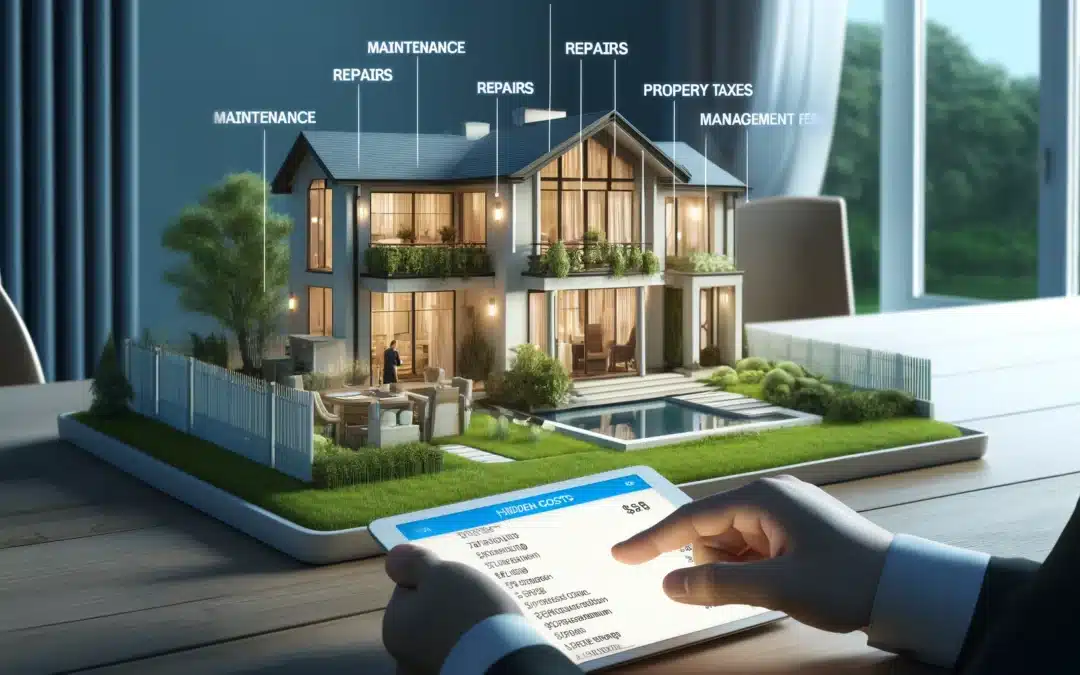Buying a property to rent out may seem like a profitable investment, but it’s essential to consider the hidden costs that can affect your long-term returns. These additional expenses, if not properly accounted for, can significantly reduce your rental income. Below, we analyze the most important hidden costs you should be aware of.
Maintenance and Repair Costs
One of the primary hidden expenses is ongoing property maintenance. As a landlord, you are responsible for all repairs and regular upkeep, which may include:
- Appliance repairs and replacements.
- HVAC system maintenance.
- Structural repairs and plumbing issues.
- Painting and periodic renovations.
On average, property maintenance costs can amount to 1% of the property’s value per year. Learn more on Forbes.
Property Taxes and Insurance
Property taxes can be a significant expense, varying by location and property value. Additionally, you’ll need landlord insurance to protect your investment from damages, liability, and other risks. These costs are recurring and can increase over time due to property appreciation and tax policy changes. More details on Investopedia.
Homeowners Association (HOA) Fees
If your property is part of a managed community, you may need to pay monthly or annual HOA fees, which cover:
- Common area maintenance.
- Security and landscaping services.
- Use of amenities such as pools and gyms.
These fees can reduce profitability, so it’s crucial to factor them into your investment calculations.
Financing Costs
If you’re using a mortgage to buy the rental property, remember that loan interest is a significant cost. In the early years of the mortgage, most of your monthly payment goes toward interest rather than principal. This means your actual return on investment might be lower than expected in the first few years.
Vacancy Periods
Your property will not always be rented, and during vacancy periods, you’ll need to cover mortgage payments, property taxes, and maintenance without rental income. Strategies to reduce vacancy risks include:
- Offering competitive rental prices.
- Keeping the property in excellent condition to attract tenants quickly.
- Listing on multiple platforms to maximize exposure.
Check out tips on reducing vacancies at Zillow.
Property Management Fees
If you don’t want to handle tenant management yourself, hiring a property manager is an option. However, this comes at an additional cost, typically ranging from 8% to 12% of monthly rent.
Depreciation and Upgrades
Over time, properties lose value due to wear and tear, requiring periodic upgrades to remain competitive in the rental market. Common updates include:
- Kitchen and bathroom renovations.
- Electrical and plumbing system modernizations.
- Flooring replacements and carpentry improvements.
These costs can accumulate and reduce net profitability.
Conclusion
Before investing in a rental property, it’s essential to factor in these hidden costs to avoid surprises and ensure a profitable investment. Planning a reserve fund for unexpected expenses and calculating net profitability while considering all these factors will help you make an informed decision and optimize your real estate investment.
For more investment strategies, check out our guide on investing in luxury properties in Spain.
Frequently Asked Questions (FAQ)
1. How much should I budget for rental property maintenance?
It is recommended to set aside at least 1% of the property’s value annually for maintenance and repairs.
2. What percentage of rent do property managers charge?
Property management companies typically charge between 8% and 12% of monthly rent.
3. How can I reduce vacancy periods for a rental property?
To minimize vacancies, offer competitive rental rates, keep the property well-maintained, and market it across multiple platforms.



